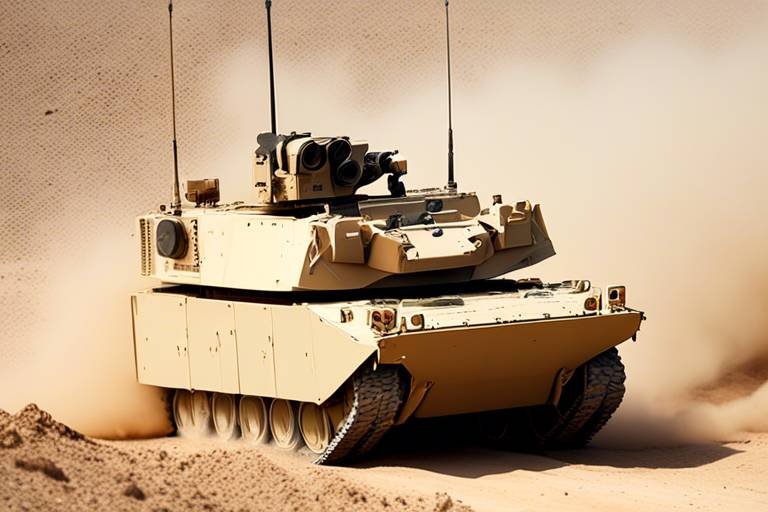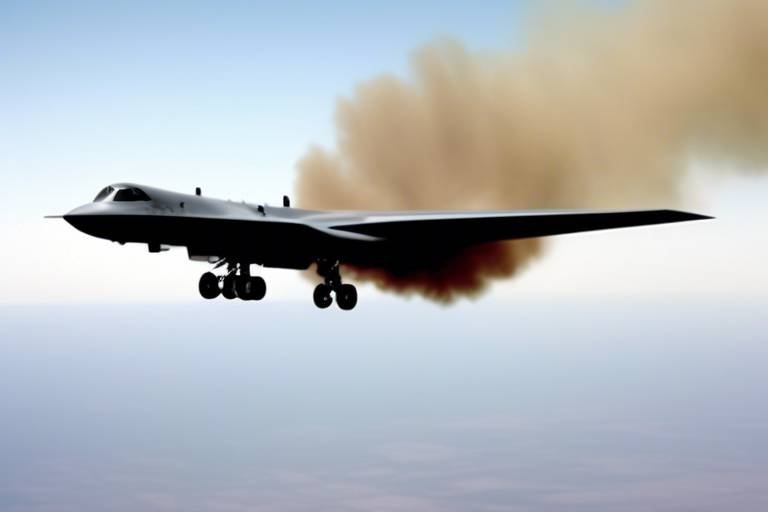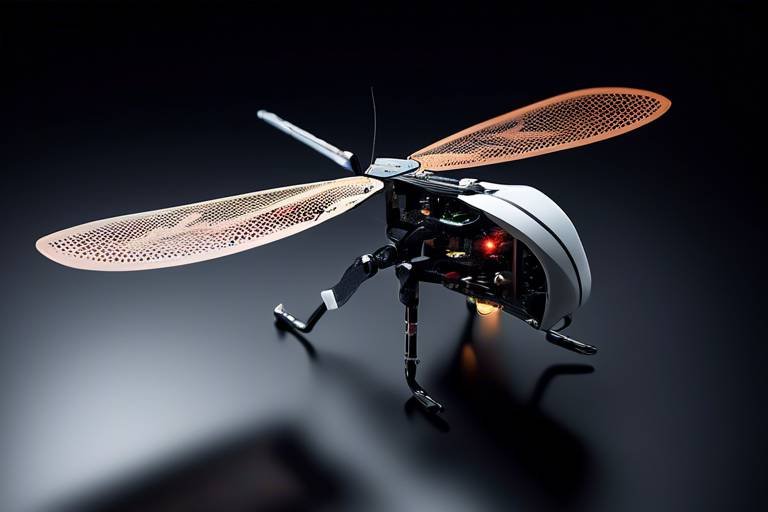Assessing the Capabilities of the T-7A Red Hawk for Pilot Training
The T-7A Red Hawk stands as a beacon of innovation in the realm of pilot training. Designed with the future in mind, this advanced aircraft is not just a machine; it's a comprehensive training platform that aims to revolutionize how pilots are prepared for the skies. With its sleek design and cutting-edge technology, the T-7A is engineered to enhance the learning experience, making it easier for aspiring pilots to acquire the skills necessary to operate modern aircraft. But what exactly sets the T-7A apart from its predecessors? Let's dive into its features and understand how it impacts pilot education in the fast-evolving world of aviation.
The journey of the T-7A Red Hawk began with a vision to create an aircraft that could meet the demands of contemporary pilot training. The design process was marked by a commitment to advanced engineering and technological innovations. From its aerodynamic shape to the materials used in construction, every aspect of the T-7A has been meticulously crafted to provide the best training environment possible. The aircraft's design is not only about aesthetics; it is also about functionality and performance. For instance, the T-7A incorporates a digital fly-by-wire system that enhances maneuverability and responsiveness, allowing trainees to experience flight dynamics that closely resemble those of modern fighter jets.
One of the standout aspects of the T-7A is its array of training features designed to prepare pilots for real-world scenarios. With a focus on simulation capabilities and real-time feedback systems, the T-7A ensures that every training session is maximized for effectiveness. Trainees can engage in a variety of scenarios, from basic maneuvers to complex tactical operations, all while receiving immediate feedback on their performance. This integration of technology into training not only enhances pilot readiness but also accelerates skill acquisition, making the learning curve less daunting for new pilots.
At the heart of the T-7A's training capabilities is its state-of-the-art simulation technology. This sophisticated system allows trainees to experience realistic training scenarios that mimic the challenges they will face in actual flight. Imagine being able to practice emergency procedures without the risks associated with real-life situations! The T-7A enables this by creating an environment where pilots can learn from their mistakes in a safe setting. This technology is crucial for developing critical thinking and quick decision-making skills, which are vital in the cockpit.
Adding another layer to its training capabilities, the T-7A employs virtual reality (VR) to immerse pilots in lifelike environments. This VR integration allows trainees to experience different flight conditions and scenarios that would be impossible to replicate in a traditional training setting. With VR, pilots can practice navigating through various weather conditions, dealing with emergencies, and even understanding complex air traffic situations. The result? Enhanced situational awareness and improved decision-making skills, which are essential for any pilot.
In the world of aviation, data is king. The T-7A leverages data analytics to provide real-time performance metrics to both instructors and students. This immediate feedback loop is invaluable, as it allows trainees to identify areas for improvement and track their progress over time. Instructors can tailor their teaching methods based on the data collected, ensuring that each pilot receives personalized training that addresses their unique strengths and weaknesses. This approach not only fosters a more effective learning environment but also prepares pilots to meet the high standards expected in modern aviation.
When it comes to pilot training, cost is always a consideration. The T-7A Red Hawk offers significant cost benefits compared to older training aircraft. With reduced maintenance costs and improved training efficiency, the T-7A represents a smart investment for aviation programs. The advanced materials and technology used in its construction lead to lower operational costs, making it a financially viable option for military and civilian training institutions alike. This cost-effectiveness does not compromise quality; instead, it enhances the overall training experience.
The versatility of the T-7A is one of its most appealing features. It is designed to adapt to various training roles, ranging from basic flight instruction to advanced tactical training. This flexibility means that the T-7A can cater to a diverse range of pilot needs, making it a valuable asset for both military and civilian aviation programs. Whether a trainee is just starting their journey or preparing for complex missions, the T-7A can provide the necessary training tools to ensure they are ready for any challenge.
With its multi-role capabilities, the T-7A can serve multiple training purposes. This adaptability is crucial in a world where the demands on pilots are constantly evolving. The aircraft can be used for everything from basic flight training to advanced combat simulations, allowing training programs to maximize their resources. This versatility not only benefits the trainees but also ensures that aviation programs can efficiently utilize their fleets, making the T-7A a strategic choice for pilot education.
As we look to the future, the T-7A Red Hawk is poised to significantly influence pilot training methodologies. Its innovative features and advanced technology will likely set new standards in pilot education, ensuring that future aviators are well-prepared for the complexities of modern flight. With the ongoing evolution of aviation technology, the T-7A stands as a testament to what the future holds for aspiring pilots. Are we ready to embrace this change? The answer is a resounding yes!
- What makes the T-7A Red Hawk different from previous training aircraft?
The T-7A features advanced simulation technology, real-time feedback systems, and virtual reality integration, making it a more effective training tool. - How does the T-7A improve pilot readiness?
By providing realistic training scenarios and immediate data-driven feedback, it enhances skill acquisition and situational awareness. - Is the T-7A cost-effective for training programs?
Yes, it offers reduced maintenance costs and improved training efficiency compared to older aircraft. - Can the T-7A be used for advanced tactical training?
Absolutely! Its multi-role capabilities allow it to adapt to various training needs, including advanced combat simulations.

Design and Development
The T-7A Red Hawk represents a significant leap in the realm of pilot training aircraft, showcasing a blend of cutting-edge technology and innovative design principles. Developed by Boeing in collaboration with Saab, the T-7A is not just another trainer; it is a carefully crafted machine that embodies the future of aviation education. The design process was driven by the need for a versatile platform capable of meeting the demands of modern air forces while also being adaptable for civilian training programs. This aircraft is the result of extensive research and development, focusing on enhancing the learning experience for trainee pilots.
One of the standout features of the T-7A is its advanced engineering, which incorporates a digital fly-by-wire system. This technology not only improves aircraft handling but also allows for a more intuitive flying experience. The cockpit is designed with the pilot in mind, featuring a glass cockpit layout that integrates all essential flight data into easy-to-read displays. This setup minimizes distractions and allows pilots to focus on their training objectives. Furthermore, the aircraft's design includes a robust safety system, ensuring that trainee pilots can learn in a secure environment.
In terms of materials, the T-7A utilizes a combination of lightweight composites and advanced alloys, making it both durable and efficient. This choice of materials contributes to improved fuel efficiency, which is a crucial consideration for any training program. The aircraft's design also incorporates modular components, allowing for easier maintenance and quicker turnaround times between training flights. This is particularly beneficial in a training environment where time is of the essence.
To illustrate the innovative aspects of the T-7A's design and development, here’s a brief overview of its key features:
| Feature | Description |
|---|---|
| Digital Fly-by-Wire | Enhances aircraft handling and provides a more intuitive flying experience. |
| Glass Cockpit | Integrates flight data into easy-to-read displays for improved focus. |
| Lightweight Composites | Contributes to durability and fuel efficiency. |
| Modular Components | Facilitates easier maintenance and quicker turnaround times. |
Overall, the T-7A Red Hawk stands as a testament to the advancements in aerospace engineering and the commitment to enhancing pilot training. By focusing on creating a versatile, efficient, and safe training platform, the developers have ensured that the T-7A is not only a tool for today’s pilots but also a foundation for the future of aviation education.
- What makes the T-7A Red Hawk different from previous trainer aircraft?
The T-7A incorporates advanced technology such as a digital fly-by-wire system and a glass cockpit, making it more efficient and user-friendly compared to older models.
- How does the T-7A enhance pilot training?
With features like real-time feedback systems and advanced simulation capabilities, the T-7A provides a comprehensive training experience that prepares pilots for real-world scenarios.
- What are the cost benefits of using the T-7A for training?
The T-7A is designed for lower maintenance costs and improved operational efficiency, which can significantly reduce overall training expenses.

Training Features
The T-7A Red Hawk is not just another aircraft; it’s a revolutionary training platform that redefines how aspiring pilots are prepared for the skies. With its cutting-edge technology, the T-7A offers a plethora of that significantly enhance pilot readiness and skill acquisition. Imagine stepping into a cockpit where every button and display is designed to simulate real-world conditions while providing instant feedback. This is the reality for trainees who fly the T-7A.
One of the standout aspects of the T-7A is its advanced simulation capabilities. Gone are the days of traditional training methods that relied heavily on static simulations or limited real-world experience. The T-7A incorporates a sophisticated suite of simulators that allow pilots to experience a wide range of scenarios, from routine flights to emergency situations. This level of immersion is crucial because it prepares pilots for the unexpected, ensuring they are not just familiar with their aircraft, but are also adept at handling crises. The integration of simulation technology not only enhances learning but also builds confidence in trainee pilots.
Diving deeper, the T-7A’s advanced simulation technology is a game changer in pilot training. It features high-fidelity graphics and real-time environmental conditions that mimic actual flight scenarios. Imagine practicing maneuvers in a simulator that responds just like the real aircraft, complete with realistic physics and flight dynamics. This technology allows for realistic training scenarios where pilots can rehearse critical maneuvers and emergency procedures without the inherent risks of actual flight. The ability to repeat scenarios until mastery is achieved cannot be overstated.
Moreover, the T-7A takes training to an entirely new level with its virtual reality (VR) integration. This technology creates immersive training environments that engage the senses and enhance situational awareness. Picture yourself in a cockpit where you can look around and interact with the environment just as you would in a real aircraft. This kind of training is invaluable, as it sharpens decision-making skills and helps pilots develop a deeper understanding of their surroundings. VR training can simulate everything from routine operations to high-stress combat scenarios, providing a comprehensive training experience.
Another critical feature of the T-7A is its data-driven feedback system. In today’s data-centric world, having access to performance metrics is essential for growth. The T-7A collects real-time data during training flights, providing instructors and students with insights into performance. This data can highlight areas of strength and pinpoint weaknesses that need addressing. For instance, if a trainee struggles with a specific maneuver, the instructor can analyze the data to tailor subsequent training sessions, ensuring that the pilot receives personalized coaching. This approach not only accelerates learning but also fosters a culture of continuous improvement.
In addition to these features, the T-7A’s training capabilities are designed to be cost-effective. By utilizing advanced technology, the aircraft reduces the need for extensive maintenance and allows for more efficient training sessions. This means that flight schools and military programs can train more pilots in less time, ultimately leading to a more prepared aviation workforce.
In summary, the T-7A Red Hawk is revolutionizing pilot training through its innovative features. From advanced simulation technology to immersive virtual reality experiences and data-driven feedback, the T-7A prepares pilots not just to fly, but to excel in the complexities of modern aviation.
- What makes the T-7A different from other training aircraft? The T-7A features advanced simulation technology, virtual reality integration, and real-time data feedback, making it a more effective training tool.
- Can the T-7A be used for both military and civilian pilot training? Yes, the T-7A is versatile and can adapt to various training roles, serving both military and civilian aviation programs.
- How does the T-7A improve pilot readiness? By providing realistic training scenarios and immediate feedback, the T-7A enhances skill acquisition and decision-making abilities.
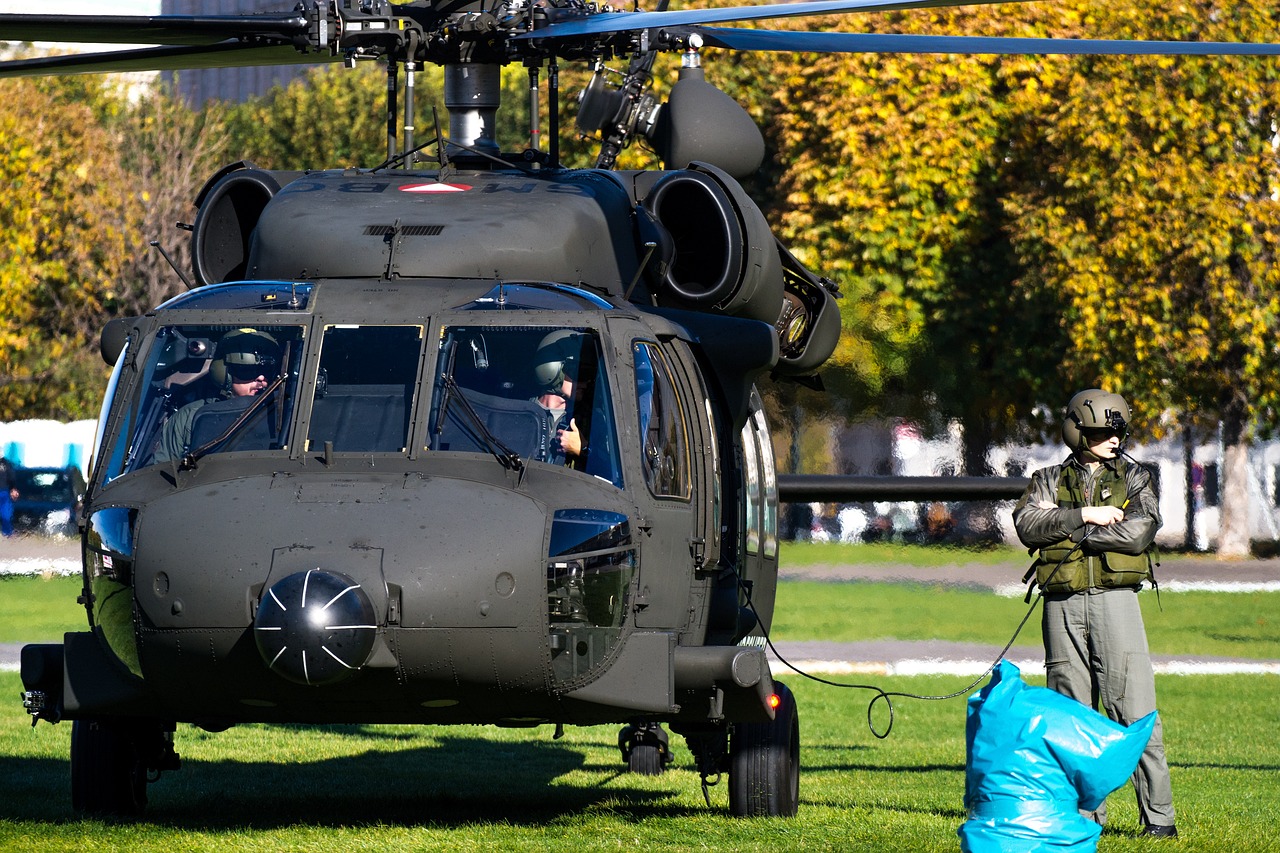
Advanced Simulation Technology
The T-7A Red Hawk is revolutionizing pilot training with its , which is nothing short of a game-changer in the aviation industry. Imagine stepping into a cockpit that not only mimics the real thing but also adapts to your learning pace, challenges you with realistic scenarios, and allows you to practice emergency procedures without any real-world risks. This is precisely what the T-7A offers. It integrates cutting-edge simulation systems that replicate various flight conditions and emergencies, giving trainee pilots a comprehensive training experience that was previously unimaginable.
One of the standout features of the T-7A's simulation technology is its ability to create realistic training scenarios. Pilots can experience everything from calm weather conditions to severe turbulence, and even critical flight emergencies. This immersive approach ensures that when trainees actually take to the skies, they are well-prepared for any situation they might encounter. The aircraft's simulation capabilities also include multi-environment training, allowing pilots to practice in different terrains and weather conditions, which is crucial for developing adaptability and quick decision-making skills.
Furthermore, the T-7A employs real-time feedback systems that monitor pilot performance during simulations. This data-driven approach not only helps instructors assess trainee proficiency but also empowers students to understand their strengths and weaknesses. Imagine having a personal coach who provides instant feedback on your performance, helping you improve with each flight. This immediate response is invaluable, as it allows for quick adjustments and targeted learning, ensuring that every training session is maximized for efficiency and effectiveness.
To illustrate the impact of this advanced simulation technology, consider the following table that outlines some key features:
| Feature | Description |
|---|---|
| Realistic Flight Scenarios | Simulates various flight conditions and emergencies to prepare pilots for real-world situations. |
| Multi-Environment Training | Allows practice in diverse terrains and weather conditions to enhance adaptability. |
| Real-Time Performance Feedback | Provides instant analytics on pilot performance to facilitate targeted learning. |
In summary, the T-7A Red Hawk's advanced simulation technology is not just about flying; it’s about creating confident, skilled pilots who are ready for the challenges of modern aviation. By blending realistic experiences with immediate feedback, the T-7A ensures that every trainee is equipped with the skills necessary to excel. As we look to the future of pilot training, it's clear that the T-7A is setting a new standard, one that prioritizes both safety and effectiveness in pilot education.
- What makes the T-7A Red Hawk different from other training aircraft?
The T-7A features advanced simulation technology that provides realistic training scenarios and real-time feedback, making it more effective than traditional training aircraft. - How does the simulation technology enhance pilot training?
It allows trainees to experience various flight conditions and emergencies, ensuring they are well-prepared for real-world flying. - Can the T-7A be used for advanced tactical training?
Yes, the T-7A is versatile and can serve multiple training purposes, including advanced tactical training.
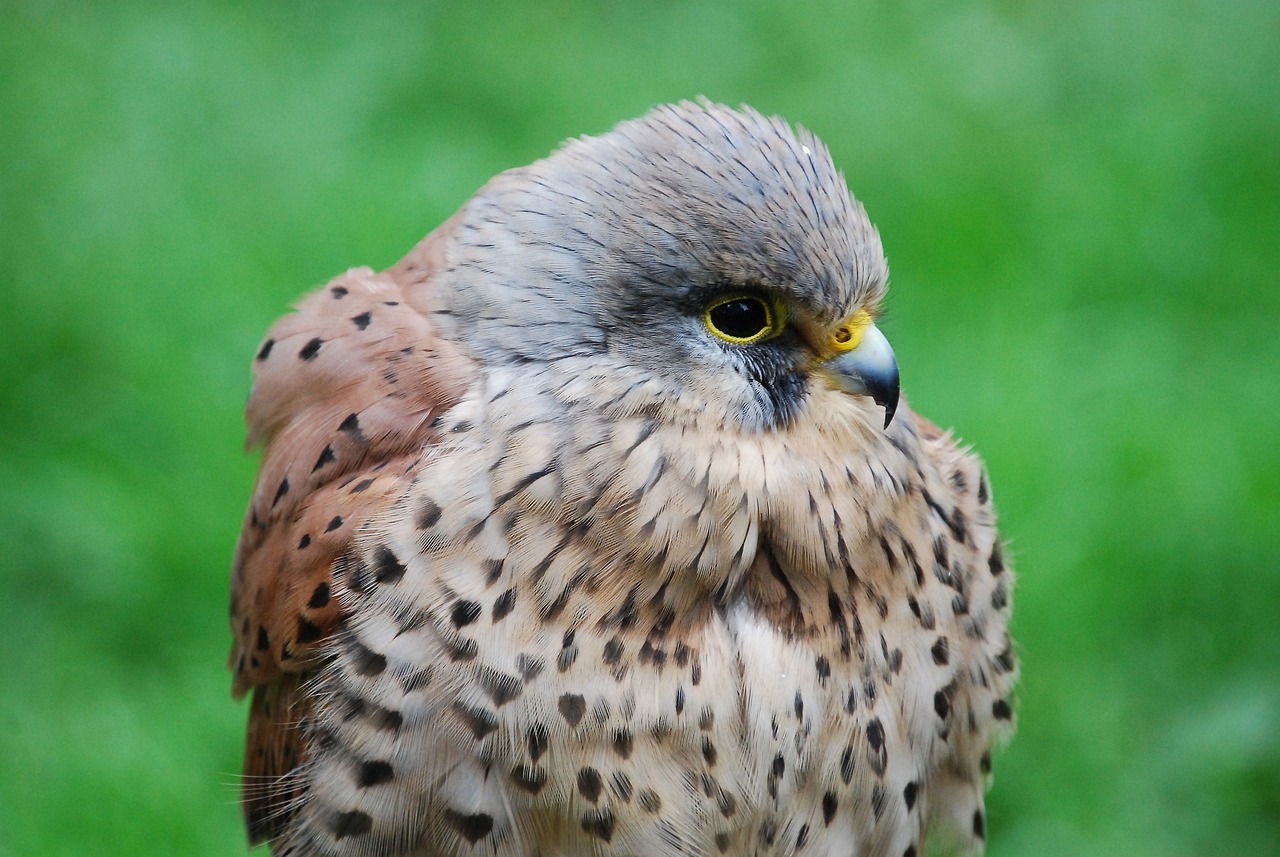
Virtual Reality Integration
The integration of Virtual Reality (VR) technology into the T-7A Red Hawk is nothing short of revolutionary. Imagine stepping into a cockpit where the boundaries of reality blur, creating an immersive training experience that feels incredibly lifelike. This is not just a flight simulator; it's an entire ecosystem designed to enhance pilot training through realistic scenarios and dynamic environments. With VR, trainee pilots can experience a wide range of flight conditions and emergency situations without ever leaving the ground.
One of the most striking aspects of VR integration is its ability to simulate real-world challenges. Whether it’s navigating through turbulent weather, dealing with equipment malfunctions, or executing complex maneuvers, the T-7A’s VR capabilities allow pilots to practice these scenarios repeatedly. This repetition builds confidence and competence, which are critical when it comes to actual flying. The immersive nature of VR means that pilots can feel the weight of their decisions, making it a powerful tool for developing situation awareness and decision-making skills.
Moreover, the T-7A's VR system is designed to be adaptive. Instructors can modify scenarios in real-time based on each trainee's performance, ensuring that the training is tailored to individual needs. This level of customization is invaluable; it means that no two training sessions are the same, keeping pilots engaged and challenged. The ability to review and analyze performance in a VR setting also provides a unique opportunity for feedback, allowing pilots to learn from their mistakes in a safe environment.
To illustrate the impact of VR on pilot training, consider the following table that outlines some key benefits:
| Benefit | Description |
|---|---|
| Enhanced Realism | Provides lifelike scenarios that mimic real flight conditions. |
| Improved Retention | Facilitates better memory retention through immersive experiences. |
| Immediate Feedback | Allows for real-time performance tracking and instructor feedback. |
| Safe Learning Environment | Enables pilots to practice emergency procedures without risk. |
In conclusion, the integration of virtual reality in the T-7A Red Hawk is a game-changer for pilot training. It not only enhances the training experience but also prepares pilots for the complexities of modern aviation. With VR, the future of pilot training is not just bright; it’s incredibly exciting.
- What is the T-7A Red Hawk? The T-7A Red Hawk is a modern training aircraft designed to enhance pilot training through advanced technology, including virtual reality integration.
- How does virtual reality improve pilot training? VR provides immersive training scenarios that simulate real-world flying conditions, allowing pilots to practice and develop their skills safely.
- Can instructors customize VR training scenarios? Yes, instructors can modify scenarios in real-time based on trainee performance, ensuring personalized training experiences.
- What are the safety benefits of using VR in pilot training? VR allows pilots to practice emergency procedures and complex maneuvers without any risk, creating a safe learning environment.

Data-Driven Feedback
The T-7A Red Hawk revolutionizes pilot training with its systems, providing an unprecedented level of insight into trainee performance. Imagine being in a classroom where every answer you give is instantly analyzed, and feedback is tailored to your unique learning style. That’s exactly what the T-7A offers! By leveraging advanced analytics, the aircraft captures a wealth of data during each training flight, allowing instructors to monitor a pilot's progress in real-time.
One of the standout features of the T-7A is its ability to collect and process data from various sensors and systems onboard. This information is then relayed to both instructors and students, creating a feedback loop that enhances the learning experience. For example, during a routine training exercise, the aircraft can track metrics such as altitude, speed, and maneuver execution, providing immediate feedback on areas that need improvement. This is akin to having a personal coach who not only watches your performance but also gives you instant pointers on how to enhance your skills.
Moreover, the T-7A utilizes a sophisticated algorithm that analyzes this data and presents it in a user-friendly format. Instructors can access detailed reports that highlight trends in a pilot's performance over time, making it easier to identify strengths and weaknesses. This data-driven approach not only improves training outcomes but also fosters a culture of continuous improvement. As a result, pilots can refine their skills more effectively, leading to a higher level of readiness when they transition to more advanced aircraft.
To illustrate the effectiveness of the T-7A's data-driven feedback, consider the following table that outlines the key benefits:
| Benefit | Description |
|---|---|
| Real-Time Monitoring | Instructors can observe pilot performance live, allowing for immediate corrections and guidance. |
| Customized Training | Feedback is tailored to individual trainees, enhancing their learning experience. |
| Performance Analytics | Detailed reports help track progress over time, enabling targeted skill development. |
| Increased Safety | Early identification of potential issues leads to safer flying practices. |
In summary, the data-driven feedback system of the T-7A Red Hawk is not just a feature; it's a transformative approach to pilot training. By integrating real-time analytics into the training process, the T-7A equips future pilots with the tools they need to excel in a demanding aviation environment. With this level of support, trainees are not only preparing to fly—they're preparing to lead in the skies.
- What is the T-7A Red Hawk?
The T-7A Red Hawk is a next-generation trainer aircraft designed to prepare pilots for modern military and civilian aviation. - How does data-driven feedback improve pilot training?
It provides real-time performance metrics and tailored feedback, allowing for immediate corrections and enhanced learning. - Can the T-7A be used for advanced training?
Yes, the T-7A is versatile and can adapt to various training needs, from basic instruction to advanced tactical training. - What role does simulation play in T-7A training?
The T-7A incorporates advanced simulation technology, allowing pilots to practice emergency procedures and realistic scenarios safely.

Cost-Effectiveness
The T-7A Red Hawk is not just a marvel of engineering; it also stands out for its , making it a game-changer in pilot training programs. In an age where budgets are tighter than ever, the ability to reduce expenses while maintaining high training standards is crucial. This aircraft offers a unique blend of advanced technology and operational efficiency, leading to significant savings in both training and maintenance costs.
One of the most compelling aspects of the T-7A’s cost-effectiveness is its reduced maintenance requirements. Unlike older aircraft that often require extensive upkeep, the T-7A is designed with modern materials and systems that minimize wear and tear. This not only cuts down on the time and money spent on repairs but also ensures that the aircraft is always ready for training. In fact, studies have shown that the maintenance costs for the T-7A are approximately 30% lower compared to its predecessors, allowing training programs to allocate resources more efficiently.
Moreover, the T-7A Red Hawk incorporates advanced simulation capabilities that further enhance its cost-effectiveness. By utilizing state-of-the-art simulators, pilots can practice a wide range of scenarios without the need for extensive flight hours in the actual aircraft. This not only saves fuel and reduces wear on the aircraft but also allows for more comprehensive training in a shorter time frame. For example, a typical training cycle can be completed in 25% less time than with traditional training methods, which translates to significant savings for training programs.
To illustrate this point, consider the following table that compares the training costs associated with the T-7A Red Hawk and older training aircraft:
| Aircraft Type | Average Hourly Operating Cost | Maintenance Cost Reduction | Training Cycle Duration |
|---|---|---|---|
| T-7A Red Hawk | $1,500 | 30% | 25% less time |
| Legacy Trainer | $2,000 | N/A | Standard duration |
This table highlights just how much more economical the T-7A is compared to older models. The lower hourly operating costs combined with reduced maintenance needs not only improve the bottom line for training organizations but also enhance the overall training experience for pilots.
In summary, the T-7A Red Hawk is a prime example of how modern technology can lead to significant cost savings in pilot training. Its innovative design, coupled with advanced simulation capabilities and reduced maintenance costs, ensures that training programs can deliver high-quality education without breaking the bank. As aviation continues to evolve, the T-7A stands out as a cost-effective solution that meets the demands of both military and civilian pilot training.
- What makes the T-7A Red Hawk more cost-effective than older trainers?
The T-7A features advanced materials and technologies that reduce maintenance needs, alongside enhanced simulation capabilities that decrease overall training costs. - How does the T-7A improve pilot training efficiency?
Its advanced simulation technology allows pilots to practice various scenarios without extensive flight hours, resulting in a quicker training cycle. - What are the operational cost savings associated with the T-7A?
On average, the T-7A's operating costs are about 25% lower than those of legacy training aircraft, allowing for more efficient resource allocation.

Operational Versatility
The T-7A Red Hawk is not just another training aircraft; it represents a significant leap forward in . Designed to adapt to a wide range of training requirements, this aircraft is capable of fulfilling multiple roles, making it an invaluable asset for both military and civilian aviation programs. Imagine a tool that can seamlessly transition from basic flight instruction to advanced tactical training—this is precisely what the T-7A accomplishes. Its design allows for a flexible approach to pilot education, catering to the diverse needs of modern aviators.
One of the standout features of the T-7A is its ability to support various training scenarios. From initial flight training to advanced maneuvers, the aircraft is equipped to handle it all. This multi-role capability enhances the overall training experience, allowing instructors to tailor lessons to individual pilot needs. For instance, the T-7A can be used for:
- Basic Flight Instruction
- Instrument Training
- Formation Flying
- Advanced Tactical Maneuvers
What makes this versatility even more impressive is the integration of cutting-edge technology, which allows for real-time adjustments to training programs. Instructors can modify exercises on-the-fly based on the performance of the trainees, ensuring that each pilot receives personalized guidance. This adaptability not only enhances learning outcomes but also prepares pilots for the dynamic nature of modern combat and aviation operations.
The T-7A's design also incorporates features that facilitate multi-role training. Its advanced avionics and simulation capabilities allow for realistic scenarios that mimic real-world conditions. For example, a trainee can practice emergency procedures in a controlled environment, which is crucial for building confidence and competence. This kind of training is essential, as it ensures that pilots are not only learning how to fly but also how to respond effectively in high-pressure situations.
Moreover, the T-7A is built with a future-oriented mindset. As aviation technology continues to evolve, the aircraft's versatility positions it as a long-term solution for pilot training. It can easily be updated with new software and hardware enhancements, ensuring that training programs remain relevant and effective. This adaptability is crucial in an era where technological advancements happen at breakneck speed, and pilot training must keep pace.
In conclusion, the operational versatility of the T-7A Red Hawk sets it apart from traditional training aircraft. Its ability to serve multiple training roles, combined with state-of-the-art technology, makes it an essential tool for developing the next generation of pilots. Whether it's basic instruction or advanced tactical training, the T-7A is designed to meet the diverse needs of aviation education, ensuring that pilots are well-prepared for the challenges ahead.
- What types of training can the T-7A Red Hawk provide?
The T-7A is capable of providing basic flight instruction, instrument training, formation flying, and advanced tactical maneuvers. - How does the T-7A adapt to different training needs?
Its advanced technology allows instructors to modify training scenarios in real-time based on pilot performance. - Is the T-7A suitable for civilian pilot training?
Yes, the T-7A's versatility makes it an excellent choice for both military and civilian pilot training programs.
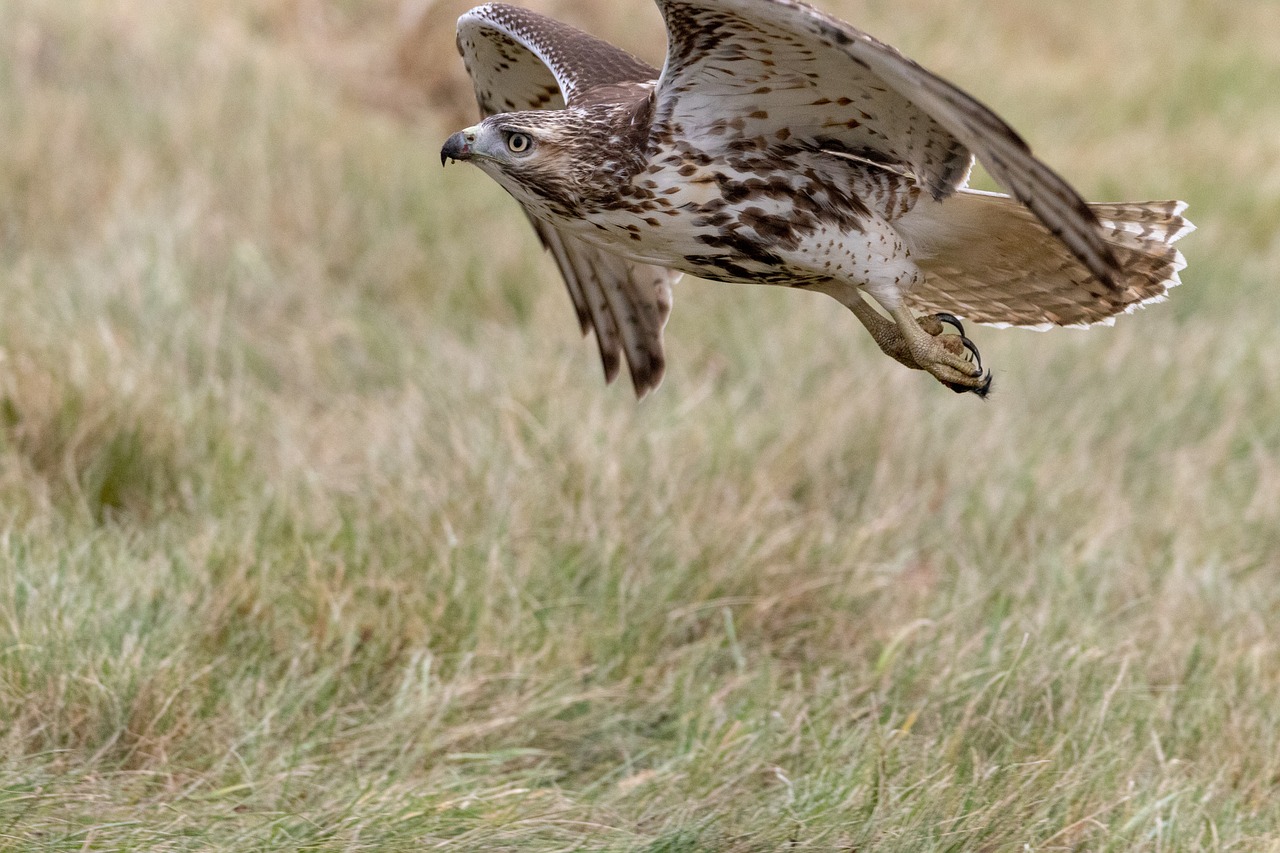
Multi-Role Training Capabilities
The T-7A Red Hawk stands out in the realm of pilot training due to its remarkable . Imagine a single aircraft that can seamlessly transition from basic flight instruction to advanced tactical maneuvers—this is precisely what the T-7A offers. With its state-of-the-art design and innovative features, this aircraft is engineered to meet the diverse needs of both military and civilian aviation programs.
What makes the T-7A particularly impressive is its ability to adapt to various training scenarios. For instance, it can be utilized for fundamental flight training, where novice pilots learn the essentials of flying. As they progress, the same aircraft can be employed for more complex training, such as air combat maneuvers and tactical operations. This versatility not only enhances the training experience but also ensures that pilots are well-prepared for real-world challenges.
One of the key factors contributing to the T-7A's multi-role capabilities is its advanced avionics and systems integration. The aircraft is equipped with cutting-edge technology that allows instructors to customize training modules based on the specific needs of the trainees. For example, the T-7A can simulate various flight conditions, weather scenarios, and emergency situations, providing pilots with a comprehensive and realistic training environment.
Moreover, the T-7A's design includes features that support joint training exercises. This means that pilots from different branches of the military can train together, fostering teamwork and collaboration. The aircraft's ability to operate in a multi-domain environment—whether in the air, on land, or at sea—makes it an invaluable asset for contemporary military operations.
To give you a clearer picture of its capabilities, here's a brief overview:
| Training Role | Description |
|---|---|
| Basic Flight Training | Introduction to flight principles and aircraft handling. |
| Advanced Tactical Training | Focus on air combat and tactical maneuvers. |
| Joint Training Exercises | Collaboration between different military branches. |
| Emergency Procedures | Realistic simulations of emergency scenarios. |
In conclusion, the T-7A Red Hawk is not just a training aircraft; it is a comprehensive training platform that prepares pilots for the multifaceted challenges of modern aviation. Its multi-role capabilities ensure that pilots receive a well-rounded education, making them adaptable and ready for any situation they may face in their careers.
- What makes the T-7A Red Hawk different from previous training aircraft?
The T-7A features advanced technology, including simulation capabilities and real-time feedback systems, which enhance pilot training significantly. - Can the T-7A be used for both military and civilian pilot training?
Yes, its versatile design allows it to cater to the needs of both military and civilian aviation programs. - How does the T-7A improve training efficiency?
By reducing maintenance costs and providing realistic training scenarios, the T-7A enhances overall training efficiency compared to older aircraft.
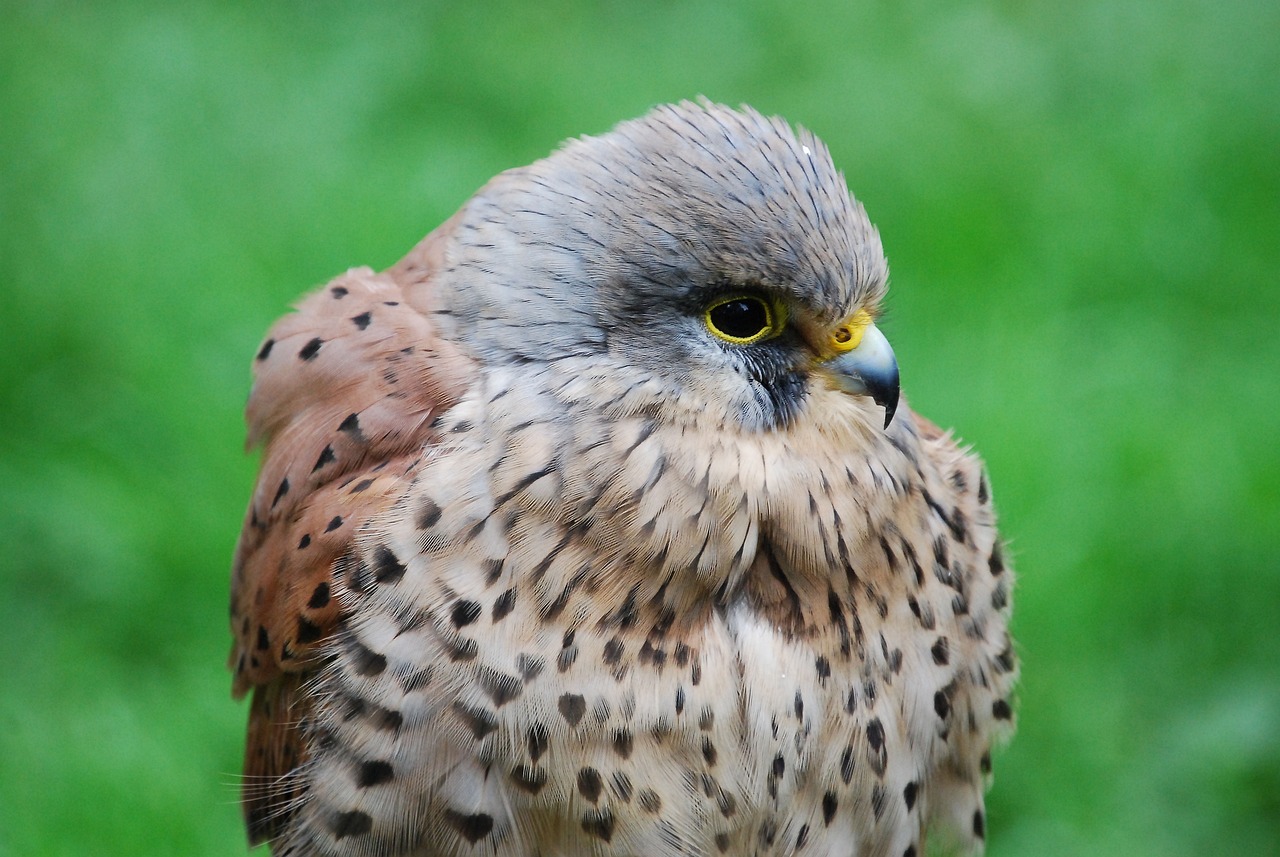
Future of Pilot Training
The future of pilot training is set to soar into new heights with the T-7A Red Hawk leading the charge. As we look ahead, it’s clear that the integration of advanced technologies will redefine how aspiring pilots are educated and prepared for the skies. Imagine a world where training is not just about flying but about mastering the art of decision-making, situational awareness, and adaptability—all crucial skills in today’s dynamic aviation environment. The T-7A, with its cutting-edge features, promises to be more than just a training aircraft; it’s a gateway to a new era in aviation education.
One of the most exciting aspects of the T-7A is its ability to provide immersive training experiences through virtual reality (VR). This technology allows trainee pilots to engage in realistic flight simulations that mimic various scenarios they may encounter in real life. Think of it as a video game that prepares you for the real deal, where every twist and turn in the simulation translates to invaluable experience in the cockpit. This level of engagement not only enhances learning but also builds confidence, as pilots can practice emergency procedures without the fear of real-world consequences.
Moreover, the T-7A’s data-driven feedback systems are transforming the way instructors evaluate student performance. Instead of relying solely on subjective observations, instructors can access real-time metrics that highlight areas of strength and weakness. This data-centric approach allows for personalized training plans, enabling students to focus on specific skills that require improvement. It’s like having a personal coach who knows exactly what you need to work on, ensuring that every training session is both efficient and effective.
As the aviation industry continues to evolve, the T-7A Red Hawk is poised to play a crucial role in shaping the future of pilot training. With the increasing complexity of aircraft and the demands of modern warfare, the need for well-trained pilots has never been more critical. The T-7A’s versatility makes it suitable for a range of training scenarios, from basic flight instruction to advanced tactical maneuvers, ensuring that it meets the diverse needs of both military and civilian pilots.
Looking ahead, we can anticipate a shift in pilot training paradigms. The incorporation of artificial intelligence (AI) into training programs is on the horizon, potentially offering even more personalized learning experiences. Imagine AI systems that analyze a pilot’s performance over time and suggest tailored exercises to enhance their skills. This forward-thinking approach could revolutionize how we train pilots, making the process more adaptable and responsive to individual needs.
In conclusion, the T-7A Red Hawk isn’t just a modern training aircraft; it’s a symbol of the future of pilot education. With its innovative features, including VR integration and data analytics, it is set to transform how pilots are trained, making them more prepared for the challenges of the skies. As we embrace these advancements, the next generation of pilots will not only be skilled aviators but also strategic thinkers capable of thriving in an ever-evolving aviation landscape.
- What makes the T-7A Red Hawk different from previous training aircraft?
The T-7A features advanced simulation technology, virtual reality integration, and data-driven feedback systems that enhance the training experience significantly. - How does virtual reality improve pilot training?
Virtual reality allows pilots to practice in realistic scenarios, enhancing their situational awareness and decision-making skills without real-world risks. - What role does data analytics play in pilot training?
Data analytics provides real-time performance metrics, allowing instructors to tailor training to each pilot's specific needs, improving overall training effectiveness. - Will the T-7A be used for both military and civilian pilot training?
Yes, the T-7A's versatility makes it suitable for a range of training purposes, benefiting both military and civilian aviation programs.
Frequently Asked Questions
- What is the T-7A Red Hawk?
The T-7A Red Hawk is a modern jet trainer designed for pilot training in the U.S. Air Force. It features cutting-edge technology and advanced training capabilities that enhance the learning experience for new pilots.
- How does the T-7A improve pilot training?
The T-7A improves pilot training through its advanced simulation technology, real-time feedback systems, and virtual reality integration, allowing trainees to experience realistic scenarios and receive immediate performance metrics.
- What are the key training features of the T-7A?
Key training features of the T-7A include state-of-the-art simulation capabilities, data-driven feedback for instructors and students, and immersive virtual reality environments that help enhance situational awareness.
- Is the T-7A Red Hawk cost-effective?
Yes! The T-7A is designed to be cost-effective by reducing maintenance costs and improving training efficiency compared to older aircraft, making it a smart investment for pilot training programs.
- What types of training can the T-7A accommodate?
The T-7A can accommodate various types of training, ranging from basic flight instruction to advanced tactical training, thanks to its multi-role capabilities that cater to diverse pilot needs.
- How does the T-7A utilize virtual reality?
The T-7A utilizes virtual reality to create immersive training environments, allowing trainee pilots to practice emergency procedures and develop their decision-making skills in a safe and controlled setting.
- What is the future of pilot training with the T-7A?
The future of pilot training with the T-7A looks promising, as its innovative features will likely shape pilot education and preparedness in an evolving aviation landscape, ensuring pilots are well-equipped for modern challenges.


